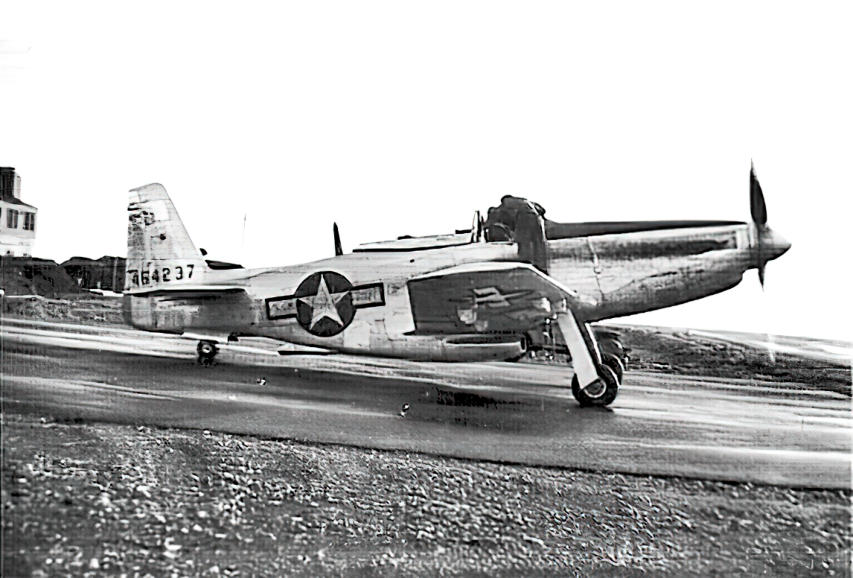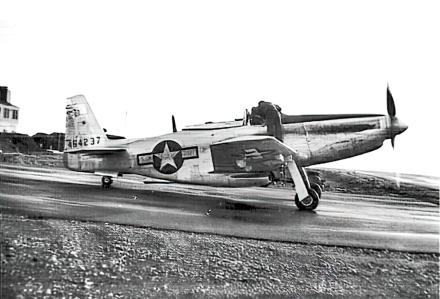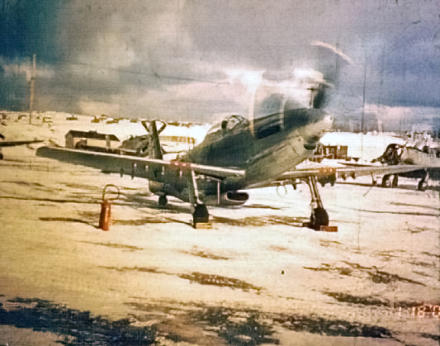

The Aleutians

The Lands of 50 mph Fog
© HLSWILLIWAW.COM
Built with XARA
P-51 “Mustang”

This was the only P-51 to arrive on Shemya. Note in the background is a tall antenna mast and the gin pole we used to raise it
with. Robert Leavitt spent time on Shemya in 1946-47. He took this photo with a Kodak Brownie camera
Current Update: 09 Dec 2021 07:44
The North American Aviation P-51 Mustang is an American long-range, single-seat fighter and fighter-bomber used during World
War II and the Korean War, among other conflicts. The Mustang was designed in April 1940 by a team headed by James
Kindelberger of North American Aviation (NAA) in response to a requirement of the British Purchasing Commission. The
Purchasing Commission approached North American Aviation to build Curtiss P-40 fighters under license for the Royal Air
Force (RAF). Rather than build an old design from another company, North American Aviation proposed the design and
production of a more modern fighter. The prototype NA-73X airframe was rolled out on 9 September 1940.
The Mustang was designed to use the Allison V-1710 engine, which had limited high-altitude performance in its earlier variants.
The aircraft was first flown operationally by the RAF as a tactical-reconnaissance aircraft and fighter-bomber (Mustang Mk I).
Replacing the Allison with a Rolls-Royce Merlin resulted in the P-51B/C (Mustang Mk III) model, and transformed the aircraft's
performance at altitudes above 15,000 ft (4,600 m) (without sacrificing range), allowing it to compete with the Luftwaffe's
fighters. The definitive version, the P-51D, was powered by the Packard V-1650-7, a license-built version of the two-speed, two-
stage-supercharged Merlin 66, and was armed with six .50 caliber (12.7 mm) AN/M2 Browning machine guns.
From late 1943, P-51Bs and P-51Cs (supplemented by P-51Ds from mid-1944) were used by the USAAF's Eighth Air Force to
escort bombers in raids over Germany, while the RAF's Second Tactical Air Force and the USAAF's Ninth Air Force used the
Merlin-powered Mustangs as fighter-bombers, roles in which the Mustang helped ensure Allied air superiority in 1944. The P-51
was also used by Allied air forces in the North African, Mediterranean, Italian, and Pacific theaters. During World War II, Mustang
pilots claimed to have destroyed 4,950 enemy aircraft. [Wikipedia]

Robert Leavitt provided this P-51 photo. Location unknown.


The Aleutians

The Lands of 50 mph Fog
P-51 “Mustang”

This was the only P-51 to arrive on Shemya. Note in the background is a tall
antenna mast and the gin pole we used to raise it with. Robert Leavitt spent
time on Shemya in 1946-47. He took this photo with a Kodak Brownie camera
The North American Aviation P-51 Mustang is an American long-
range, single-seat fighter and fighter-bomber used during World
War II and the Korean War, among other conflicts. The Mustang
was designed in April 1940 by a team headed by James
Kindelberger of North American Aviation (NAA) in response to a
requirement of the British Purchasing Commission. The
Purchasing Commission approached North American Aviation to
build Curtiss P-40 fighters under license for the Royal Air Force
(RAF). Rather than build an old design from another company,
North American Aviation proposed the design and production of a
more modern fighter. The prototype NA-73X airframe was rolled
out on 9 September 1940.
The Mustang was designed to use the Allison V-1710 engine,
which had limited high-altitude performance in its earlier variants.
The aircraft was first flown operationally by the RAF as a tactical-
reconnaissance aircraft and fighter-bomber (Mustang Mk I).
Replacing the Allison with a Rolls-Royce Merlin resulted in the P-
51B/C (Mustang Mk III) model, and transformed the aircraft's
performance at altitudes above 15,000 ft (4,600 m) (without
sacrificing range), allowing it to compete with the Luftwaffe's
fighters. The definitive version, the P-51D, was powered by the
Packard V-1650-7, a license-built version of the two-speed, two-
stage-supercharged Merlin 66, and was armed with six .50 caliber
(12.7 mm) AN/M2 Browning machine guns.
From late 1943, P-51Bs and P-51Cs (supplemented by P-51Ds
from mid-1944) were used by the USAAF's Eighth Air Force to
escort bombers in raids over Germany, while the RAF's Second
Tactical Air Force and the USAAF's Ninth Air Force used the
Merlin-powered Mustangs as fighter-bombers, roles in which the
Mustang helped ensure Allied air superiority in 1944. The P-51
was also used by Allied air forces in the North African,
Mediterranean, Italian, and Pacific theaters. During World War II,
Mustang pilots claimed to have destroyed 4,950 enemy aircraft.
[Wikipedia]

Robert Leavitt provided this P-51 photo. Location unknown.
Current Update: 09 Dec 2021 07:44
© HLSWILLIWAW.COM
Built with XARA

















